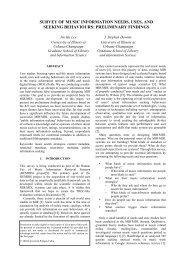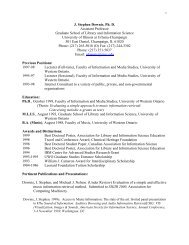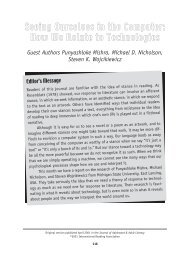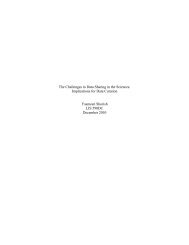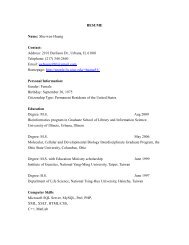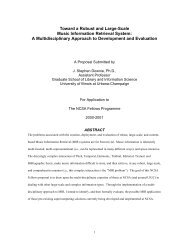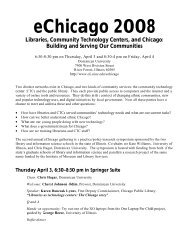The Anatomy of Bibliography - Illinois
The Anatomy of Bibliography - Illinois
The Anatomy of Bibliography - Illinois
Create successful ePaper yourself
Turn your PDF publications into a flip-book with our unique Google optimized e-Paper software.
2. (Apr. 9, 10)<br />
written contract that, as Edmund Burke proposed, ties together “those who are<br />
living, those who are dead, and those who are yet to be born.”<br />
Boccaccio and his successors, it may be argued, were guided by the angel<br />
who, in the Barnabite library <strong>of</strong> St. Eloi in Paris, sat for the portrait seen in the<br />
frontispiece <strong>of</strong> this book. 2 (Admitted: this portrait was done many years later,<br />
well after Boccaccio visited Monte Cassino. For angels, time is irrelevant.) <strong>The</strong><br />
angels’ diligent scribal work is an act <strong>of</strong> faith: readers will exist some day. <strong>The</strong>ir<br />
duty is to cite God’s evidence, convincing and dubious, for readers credulous<br />
and questioning, scrupulous and casual. <strong>The</strong> metaphors <strong>of</strong> Boccaccio – the<br />
prototypical reader – and the angel <strong>of</strong> St. Eloi – the prototypical compiler –<br />
watch over this essay on bibliography.<br />
______________________<br />
What exactly is bibliography? Those who ask the question – the audience for<br />
this book – usually also ask, what all is it, and how do its parts fit together? It is<br />
lists, study, catalogues, references, and history, in fact all <strong>of</strong> them. All deal with<br />
books, as defined either narrowly – physical objects in folded sheets, the kind<br />
that have been produced by and have guided our civilization since the 1450s –<br />
or broadly – objects <strong>of</strong> all kinds that are meant to be read. <strong>The</strong>re are millions <strong>of</strong><br />
books, and countless readers who have used them and will continue to use them<br />
in countless ways. Many practices have been devised to help the readers find<br />
and use the books. This book, as its subtitle says, is an anthology <strong>of</strong> perspectives<br />
on those practices. It is meant mostly to describe and celebrate bibliography in<br />
all its parts. Its original contributions to any one <strong>of</strong> its parts, most <strong>of</strong> which are<br />
already well developed, are implicit.<br />
My title pays tribute to Holbrook Jackson’s <strong>The</strong> <strong>Anatomy</strong> <strong>of</strong> Bibliomania, in all<br />
its breadth <strong>of</strong> scope and joyous pr<strong>of</strong>usion <strong>of</strong> specifics, which in turn honors<br />
Robert Burton’s <strong>The</strong> <strong>Anatomy</strong> <strong>of</strong> Melancholy (which Jackson had earlier edited for<br />
Everyman’s Library). Burton and Jackson, to be sure, deal mainly with the<br />
body’s “humours,” not its organs, which are the main concern here. Both are<br />
inquisitive and self-consciously curious, like this book, although they deal with<br />
what thoughtful people feel rather than with bibliographers do.<br />
===============<br />
2 Reproduced from copies <strong>of</strong> the catalogue, ca. 1703, <strong>of</strong> the Barnabite library <strong>of</strong> Saint-Eloi in Paris,<br />
which survives in the Bibliothèque Mazarine. See further p. 7.<br />
2



